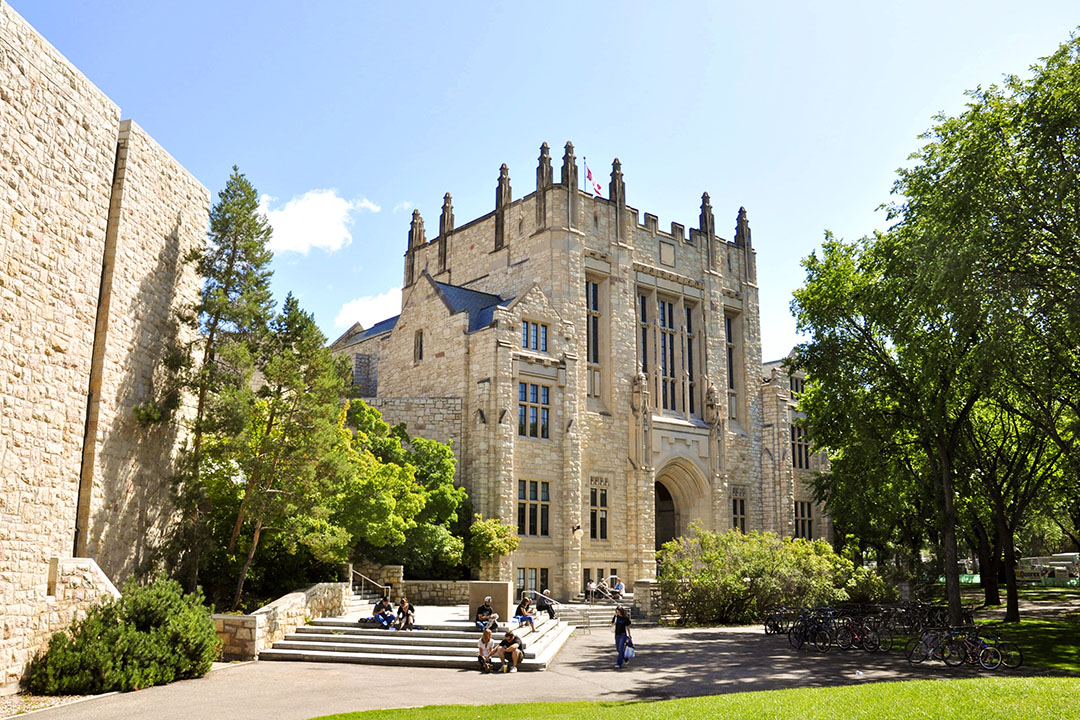
Enhancing student experience, student supports focus of 2023/24 tuition rates
Today the University of Saskatchewan (USask) announced tuition rates for the 2023/24 academic year, implementing an increase to support continued delivery of high-quality academic programming alongside further investment in student services and financial aid.
The tuition change is a weighted average increase of 4.0 per cent—4.1 per cent for undergraduate students, and 2.6 per cent for graduate students. This will mean that in the College of Arts and Science, where nearly half of all USask students are enrolled, a domestic student’s tuition in an undergraduate Bachelor of Arts program will change from $6,978 to $7,257 for the upcoming year—an increase of $279, or about $8.75 per week over the fall and winter terms.
“Tuition is vital to the university’s ongoing operations, enabling us to meet our academic mission,” said Dr. Airini (PhD), USask’s provost and vice-president academic. “Through this tuition rate change, we will ensure USask students continue to have access to high-quality academic programming and the student-centred services that support their success.”
As part of its annual tuition review and rate-setting processes, USask examines rates at peer institutions in the U15 Group of Canadian Research Universities. Tuition rates are considered within the context of five principles at USask, as per the Tuition and Fees Authorization Policy:
- Comparability to similar programs;
- Accessibility and affordability for students;
- Enabling the high quality of programs;
- Predictability of tuition to support longer-term planning for students; and
- Transparency through consultation with students to ensure a common understanding on tuition.
To mitigate the impact of economic barriers for students with financial need, USask has budgeted nearly $56 million in 2023/24 for student aid, through scholarships, bursaries, and tuition waivers. This does not include financial support through the many employment opportunities that are available to USask students.
In the upcoming 2023/24 academic year, needs-based funding of $1 million will be allocated toward financial support for continuing international undergraduate and master’s degree students. This is approximately 13 per cent of the overall new tuition revenue stemming from the increase to international student tuition. USask is also investing in other key student supports, including additional funding for the the University of Saskatchewan Students’ Union (USSU) Food Centre, which is accessed by students across campus.
Dr. Patti McDougall (PhD), USask’s deputy provost and co-chair of the university’s tuition advisory group, said tuition decisions are made carefully following ongoing engagement with campus stakeholders, including undergraduate students, graduate students, the USSU, the Graduate Students’ Association (GSA), and faculty, deans, and executive directors of colleges and schools.
In 2021, USask launched tuition consultation initiatives to further engage students about tuition rates and how the university utilizes tuition revenue. Tuition planning and planning and resource allocation learning modules were developed to provide students with comprehensive information about how tuition rates are decided, as well as about the role of student consultation, the processes and timelines for setting tuition rates, and how integrated planning is connected to resource allocation and budgeting.
“We are hearing the input from students and are grateful for student advice on what investments would be of benefit to them and where the university should consider reducing investment,” said McDougall. “We welcome continued feedback from members of our campus community, and we remain committed to ongoing discussions in the upcoming academic year.”
Also in 2021, USask signed The Saskatchewan Post-Secondary Multi-Year Operating Funding Memorandum of Understanding with the Government of Saskatchewan. This has created the opportunity for overall tuition stability across several years and has enhanced the predictability of tuition decisions.
Coupled with the provincial operating investment, tuition supports USask by jointly funding the university’s core expenses, including faculty and staff salaries; student financial aid; student services; libraries; information technology; infrastructure investment; and administration across campuses. Tuition and fees provide about 19 per cent of USask’s total comprehensive revenue.
“This revenue is important so that we can continue to offer outstanding educational experiences for the students who choose USask from within our province and our country, as well as for those students who choose to come to our university from 130 countries from around the world,” said Airini.
Tuition rates for all undergraduate and graduate programs can be found online at usask.ca/tuition.

